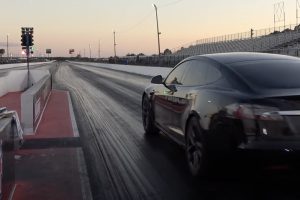Tesla and the Environmental Protection Agency (EPA) settled the electric automaker’s Clean Air Act violation from April 2021. Tesla will pay a $275,000 penalty.
The EPA announced the terms of the settlement earlier today.
In April 2021, Tesla was accused by the EPA of violating the federal Clean Air Act regulations known as National Emission Standards for Hazardous Air Pollutants for Surface Coating of Automobiles and Light-Duty Trucks from October 2016 through September 2019. Tesla violated the regulations by:
- Failing to develop and/or implement a work practice plan to minimize hazardous air pollutants emissions from the storage and mixing of materials used in vehicle coating operations.
- Failing to correctly perform required monthly emissions calculations needed to demonstrate that the facility’s coating operations complied with federal hazardous air pollutant standards.
- Failing to collect and keep all required records associated with the calculation of the hazardous air pollutants emission rate for Tesla’s coating operations.
“Today’s enforcement action against Tesla reflects EPA’s continued commitment to ensure compliance with federal clean air laws,” the EPA’s Pacific Southwest Regional Administrator Martha Guzman said. “EPA takes seriously every company’s obligation to safeguard our environment and protect our most vulnerable communities.”
The EPA added that Tesla corrected the violations noted in both settlements and returned to compliance.
The agency also says that people living in communities close to sources of hazardous air pollutants can face significant risks to their health and environment. There are currently over 180 chemicals that are known or suspected to cause cancer or other health issues. Tesla’s facility was found to be using a coating that contained formaldehyde, ethylbenzene, naphthalene, and xylene.
Last year, Tesla also agreed to pay a $1 million fine and install solar panels on top of the Fremont Factory following a settlement with the Bay Area Air Quality Management District, which found 33 violations at the facility. These violations included emissions exceeding Tesla’s permit limits, installing or modifying equipment without proper permits, failure to conduct required emissions testing, failure to maintain records, and failure to report information to the Air District in a timely manner.





